- Home
- / Personal Finance
- / 10 Best Fixed Income Mutual Funds in India 2024
- 908 Views
- 4 Comments
- Last comment
10 Best Fixed Income Mutual Funds in India 2024
These fixed income debt funds are highly experienced and promise better returns than FDs, zero loss, low volatility, and low to moderate risk levels.
Fixed income mutual funds are those mutual fund schemes whose underlying assets are fixed-income securities, such as government securities, debentures, corporate bonds, and other money market instruments. These funds are also broadly known as debt funds. Corporate Bond Funds, Dynamic Bond Funds, Banking & PSU Debt Funds, Gilt Funds, Liquid Funds etc. fall under the category of Fixed Income Funds.
Fixed Income securities have a lower volatility and are less affected by varied market fluctuations. Moreover, they tend to be invested in both debt and money market instruments (like commercial papers, Treasury bills, and more). Thus, they have a diverse portfolio which is the reason why Fixed Deposit investors are switching to Fixed Income mutual funds for higher returns.
Yes, fixed income mutual funds give very less (upto 50%) returns when compared to equity market mutual funds, but the risk is also very less which ensures no loss and profits greater than bank deposits. Therefore, I have got you the 10 Best Fixed Income Mutual Funds in India in 2024! You can invest in Fixed Income Mutual Funds via a lumpsum amount or monthly SIP.

Before moving ahead, below are some important mutual fund terms and metrics you need to know to understand the Best Fixed Income Mutual Funds better.
Benchmark - Benchmark is an index that is used to Measure a Mutual Fund's overall performance. It provides an indicative value of how much one's investment should have earned, which can be compared against how much it has earned in reality.
NAV - NAV stands for Net Asset Value. The performance of a mutual fund scheme is denoted by its NAV per unit. NAV per unit is the market value of securities of a scheme divided by the total number of units of the scheme on a given date
Credit Risk Rating - The Credit Risk Ratings incorporate ICRA's assessment of a debt fund's published investment objectives and policies, its management characteristics, and the creditworthiness of its investment portfolio. ICRA's analysts obtain and rely on relevant data from public and non-public sources. AAA is the highest level of credit rating indicating highest safety.
CAGR - CAGR stands for Compound Annual Growth Rate. It is a way to measure how an investment or business has grown over a specific period of time. It takes into account the effect of compounding, which means that the growth builds upon itself.
Risk Level - The risk score in mutual funds represents the degree of volatility and potential losses associated with a particular fund. It is calculated based on factors such as the fund's asset allocation, historical performance, and market conditions, providing investors with insights into the fund's risk profile. The riskometer classifies risk into 6 distinct levels, Low, Low to Moderate, Moderate, Moderately High, High and Very High.
AUM - AUM or Assets Under Management is the total funds that a mutual fund scheme holds. It is the total amount of all the investors in a mutual fund. All the Best Fixed Income Mutual Funds have AUM in crores.
Fund Manager - A mutual fund manager is a financial professional entrusted with the task of overseeing the investment portfolio of a mutual fund. These skilled individuals are responsible for making investment decisions that align with the fund's objectives and generating returns for investors. Thus, they are responsible for investing and managing the AUM on behalf of investors.
Expense Ratio - Expense Ratio is the fees charged by mutual fund companies to manage the mutual fund. It is expressed as a percentage of the total assets under management. The value of an expense ratio is determined by the size of the mutual fund under consideration. Direct plans have less expense ratio compared to regular plans because there is no middle managing 3rd party partner such as Zerodha, PhonePe’ Share Market, Groww, Upstox, and 5Paisa. However, Groww, Zerodha, Upstox, and many others offer zero commissions on some direct plan funds!
Holdings - Holdings are the contents of an investment portfolio held by a mutual fund. Holdings can be of stocks, bonds, mutual funds, options, futures, and exchange-traded funds (ETFs).
YTM - YTM is yield to maturity which means the total return you expect from your investment in debt mutual funds if the same is held till maturity. It is expressed as a percentage of the current market price.
Potential Risk Class - The Potential Risk Class (PRC) matrix is a risk measurement framework introduced by SEBI in 2021 to help mutual fund investors evaluate and compare the risk levels of different debt mutual fund schemes. There are 2 verticals here, credit risk and interest risk which have low, moderate, and high levels.
Now, let’s go through the list of Best Fixed Income Mutual Funds in India in 2024.
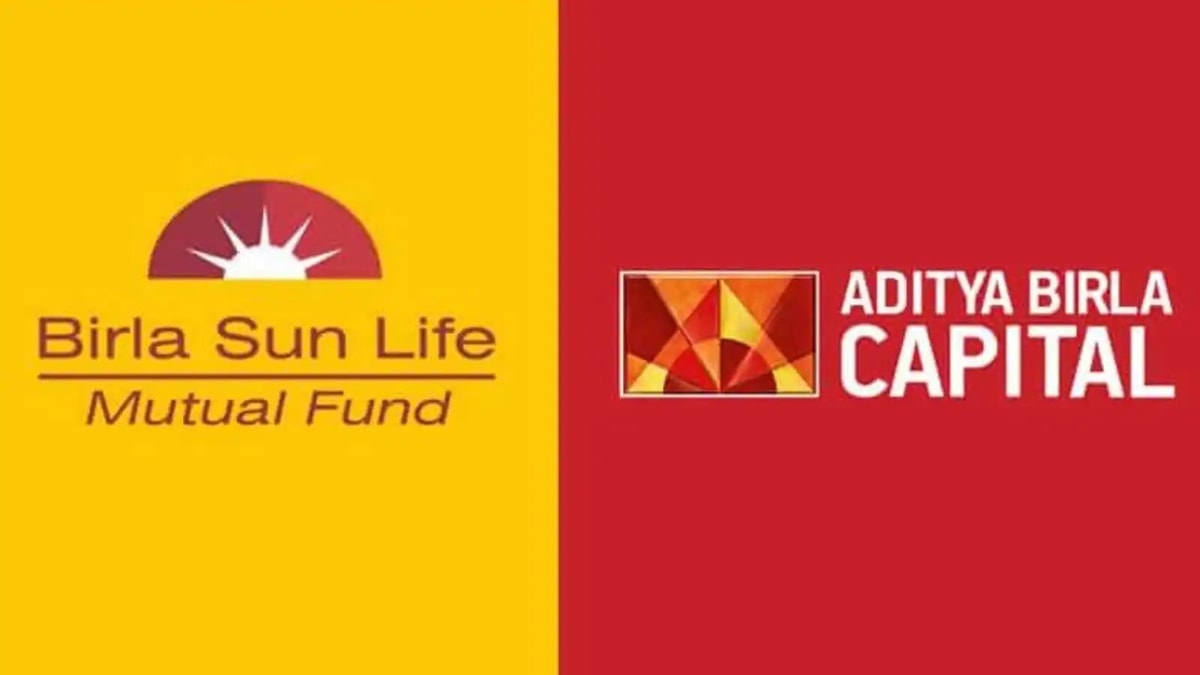
Aditya Birla Sun Life Corporate Bond Fund has grown 41.83% in the last 5 years and 628.18% since its start 24 years ago! This is what makes it one of the best fixed income mutual funds in India.
It is an open ended debt scheme predominantly investing in AA+ and above rated corporate bonds. Besides, it has a high interest rate risk and moderate credit risk profile. Liquidity is also high.
Ideal investment period is 3 months to 2 years i.e. for short to medium term investors. This fund mostly invests in Debentures, GOI Securities, and bonds.
What this fund does great is that it studies macroeconomic conditions to predict likely direction interest rates so as to position the portfolio accordingly. Also, low expense ratio benefits here.
AUM : ₹21,330.37 crores
NAV : ₹102.43
Return since start (CAGR) : 8.92%
Benchmark : NIFTY Corporate Bond Index A-II
Min Investment : ₹100
Risk level : Moderate
Fund Managers : Mr. Kaustubh Gupta (Co-Head of Fixed Income Funds, CA & CFA level 2, 17 years experience) | Mr. Dhaval Joshi (15 yrs exp)
Top Holdings : GOI, Aditya Birla Sun Life Liquid Fund, Union Bank, Small Industries Devp. Bank, HDFC Bank, Housing Development Finance, National Bank For Agriculture & Rural Development, Power Finance Corporation, REC Ltd, Bajaj Housing Finance
Expense Ratio : 0.51%
YTM : 7.68%
Return Period |
Fixed Income Returns |
Return on Investing ₹10,000 |
5 years |
7.26% |
₹14,201 |
3 years |
5.65% |
₹11,795 |
1 year |
7.26% |
₹10,732 |

DSP Credit Risk Fund is a Debt Income Credit Risk fund with CRISIL Credit Risk Debt B-II Index as its benchmark. Its NAV (as on 10 May 2024) is ₹39.97 which is 0.59% up from the previous month.
This fixed income mutual fund has given 78.4% times upto 8% returns and 21.6% times in the range of 8-12% in the last 5 years. Also, it has a low volatility which is why it is among the best fixed income mutual funds in India.
DSP Credit Risk Fund invests in high yielding & lower-rated debt securities (at least 65% in AA and below rated securities). Thus, it can also result in short-term loss so keeping it for a minimum of 3 years is recommended. However, in the last 1 year it gave around 15% returns!
It invests 78.70% in Bonds & NCDs, 15.60% in Government Securities (Central/State), 5.40% in TREPS (Treasury Bills Repurchase), and 0.30% in other Mutual-funds. On the Credit rating profile front it has CRISIL AA, SOV, IND AA, CARE AA, and ICRA AA with 36.40%, 15.60%, 13.30%, 10.80%, and 8.20% weightage respectively. This is what makes it a strong fixed income mutual fund. Also, 79.03% investment is into Low Risk securities.
Its Annual rolling returns over every 5 years period since inception till current date has a Min CAGR of 2.9%, Median CAGR of 6.5%, and Max CAGR (compound annual growth rate) of 9.8%. Moreover, DSP Credit Risk Fund vs CRISIL 10 Year Gilt Index, from last year is 15.13% vs 6.23% which is amazing!
NAV (as on 10 May 2024) : ₹39.97
Risk level : Moderately High
Total AUM (assets under management) : ₹193.84 crores (as of Apr 30, 2024)
Age of Mutual Fund : 21 years
Expense Ratio : 1.17%
Ideal holding period : 3+ Years
Investor count : 37,590
Fund managers : Laukik Bagwe (Managing this fund since July 2016) | Vivek Ramakrishnan (since July 2021)
Top holdings : Godrej Industries Limited, Nuvoco Vistas Corporation Limited, Nirma Limited, JSW Steel Limited, 7.10% GOI 2034
YTM (Yield to Maturity) : 8.34%
Potential Risk Class Matrix : C-III (highest interest rate risk and credit risk)
The profits shown below are for lumpsum investment options.
Return Period |
Fixed Income Returns |
Return on Investing ₹10,000 |
5 years |
7.24% |
₹14,170 |
3 years |
9.48% |
₹13,120 |
1 year |
15.13% |
₹11,507 |
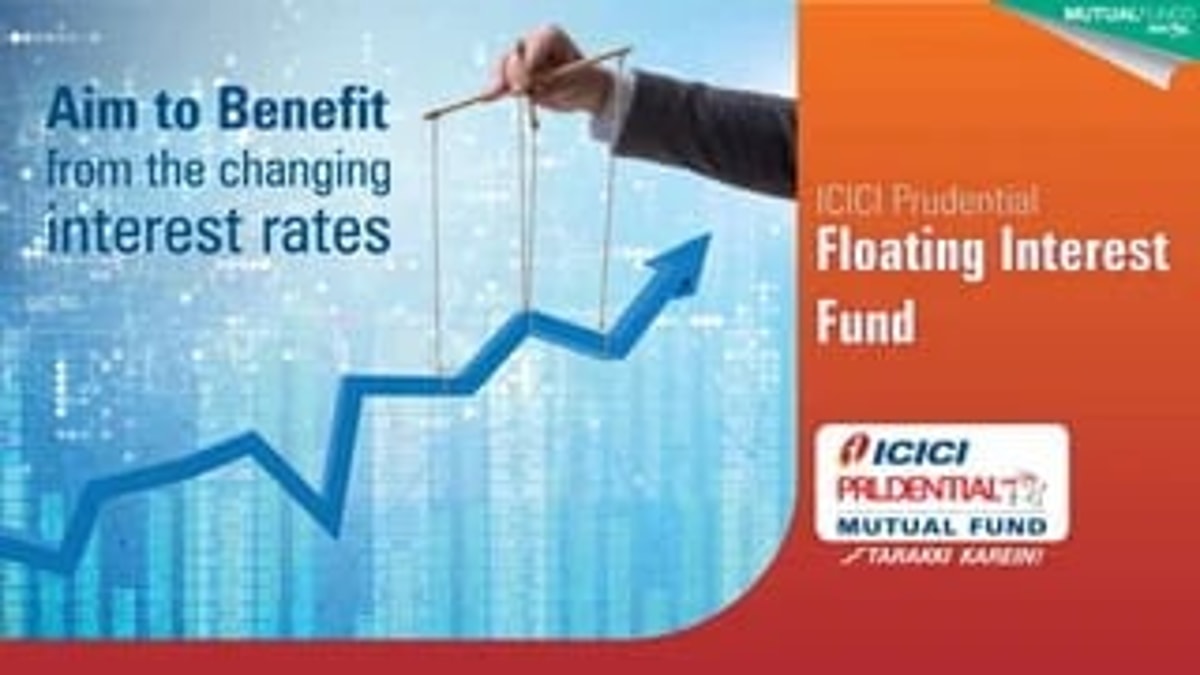
It is an open ended low duration debt scheme. Ideal duration to stay invested in ICICI Prudential Floating Interest Mutual Fund is 6-12 months. It invests mainly in floating rate instruments while maintaining the optimum balance of yield, safety and liquidity.
Note: Floating-rate instruments adjust cash flows to manage changes in interest rates. They bear less price risk than fixed-rate instruments and are used to hedge certain exposures and to match asset and liability cash flows.
This fixed income mutual fund has given 7.60% returns in-all since its start 18 years back which is why it is one of the best fixed income mutual funds. Besides, its 3 years CAGR is 5.85% compared to 5.36% of its benchmark i.e. NIFTY Low Duration Debt Index A-I.
It invests mainly in government securities and corporate securities. Besides, in credit rating, SOV (60.20%), Crisil AAA (14.90%), Crisil AA+, Crisil AA, and ICRA AA are its top ones. However, it has given Relatively weak performance among peers recently.
ICICI Prudential Floating Interest Mutual Fund vs CRISIL 10 Year Gilt Index stands at 7.91% vs 6.23%. Over the past 3 years, it has shown high volatility, but has given Better risk adjusted returns as per Sharpe Ratio, Treynor's Ratio, and Jension's Alpha.
NAV (Regular-Growth) As of 10 May 2024 : ₹387.72
Age of Mutual Fund : 18 years
AUM : ₹9,927.07 Crores
Expense Ratio : 1.27%
Min Investment Period : 60 days
Average Return : 7.09%
YTM : 8.31%
Risk level : Moderate
Potential Risk Class Matrix : B-III (highest interest rate risk and moderate credit risk)
Fund Managers : Rohan Maru (Managing this fund since 2012) | Darshil Dedhia (11 years exp.)
Top holdings : 8.34% GOI Floater 2033, 8.1% GOI Floater 2034, 7.18% GOI 2033, DME Development, LIC, Bharti Telecom, Muthoot Finance
Return Period |
Fixed Income Returns |
Return on Investing ₹10,000 |
5 years |
6.73% |
₹13,832 |
3 years |
5.95% |
₹11,860 |
1 year |
7.93% |
₹10,802 |

Sundaram Money Market Fixed Income Mutual Fund invests in money market securities such as Certificate of Deposits, Commercial Papers, T Bills, Government Securities, Commercial Bills and other instruments.
This debt mutual fund has a low risk profile and works on a short term basis. It has high liquidity, low-volatility, and the ability to generate a higher return than liquid funds. The ideal period to stay invested in this fund is 3-12 months.
You can start an SIP with ₹1000 per month/week or ₹3000 per quarter. Expense ratio here is very low which is great. Also, standard deviation has shown low volatility of 0.16 in the last 3 years. However, as per Jension's Alpha and Sharpe Ratio, it has given Poor risk adjusted returns. Treynor's Ratio shows Better risk adjusted returns.
Potential Risk Class Matrix : B-I (low interest rate risk and moderate credit risk)
NAV (as on 13-05-2024) : ₹13.85
Returns since inception : 6.06%
Average AUM : ₹124 Crores
Minimum Investment Amount : ₹1000 (SIP/Lumpsum)
Risk level : Low
Age of Mutual Fund : 6 years
Benchmark : Tier I (NIFTY Money Market Index A-I), Tier II (NIFTY Money Market Index)
Fund Managers : Mr. Sandeep Agarwal and Mr. Dwijendra Srivastava
YTM : 7.56%
Average Maturity : 0.81 years
Expense Ratio : 0.25%
Top Holdings : National Bank for Agriculture & Rural Development, HDFC, Axis, Punjab National Bank, DBS Bank, IDFC First, IndusInd, ICICI Bank.
Return Period |
Fixed Income Returns |
Return on Investing ₹10,000 |
5 years |
5.6% |
₹13,174 |
3 years |
5.4% |
₹11,782 |
1 year |
7.3% |
₹10,732 |
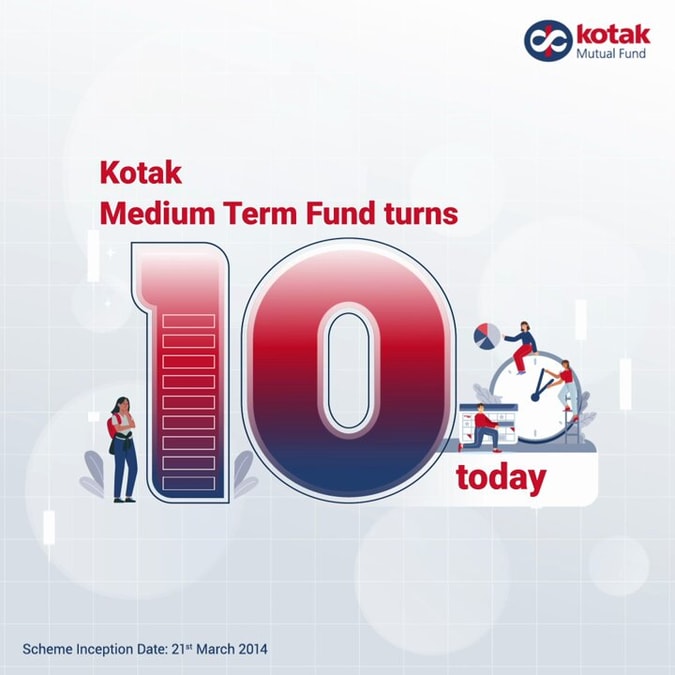
Kotak Medium Term Fixed Income Mutual Fund Invests in Medium term debt. The ideal investment period here is 3-4 years. It is an open-ended debt scheme to generate regular income and capital appreciation by investing in a portfolio of medium term debt and money market instruments.
The fund has an average maturity floor of around 3 years and a ceiling of around 7 years. As a result, the fund occupies a mid-segment space between the long duration and the short duration bonds. Besides, it operates largely on a Hold-Till-Maturity (HTM) strategy.
49.6% of its net assets have AAA, AAA(CE), and SOV rating. Then, 33.24% have AA+, AA, and AA- while 7.14% have A+(CE) and A rating. Besides, 72.04% assets are into Debentures and Bonds, 17.94% into Government Dated Securities, and 5.46% into Real Estate Investment Trusts.
This best fixed income mutual fund has shown high volatility during long-term investment. However, it had low volatility in the last 3 years. In all it has 66 debt holdings which is way higher than the average of its peer funds.
Potential Risk Class Matrix : C-III (high interest rate risk and high credit risk)
CAGR since start : 8.35%
Benchmark : NIFTY Medium Duration Debt Index
Age of Mutual Fund : 10 years
Fund Managers : Deepak Agrawal (since 22/06/2015), Sunit Garg (since 1/11/22)
Top Holdings : Embassy Office Parks REIT, BHARAT HIGHWAYS INVIT, GODREJ PROPERTIES, L&T Metro Rail (Hyderabad), Tata Steel, Aadhar Housing Finance Limited.
NAV : ₹22.57
AUM : ₹1,743 Crores
Expense Ratio : 1.61%
Risk level : High
YTM : 8.52%
Return Period |
Fixed Income Returns |
Return on Investing ₹10,000 |
5 years |
7.07% |
₹14,072 |
3 years |
6.48% |
₹12,071 |
1 year |
8.05% |
₹10,804 |

Invesco India Gilt Fund has given credit risk free returns over medium to long term investment. It invests primarily in securities issued and guaranteed by the Central and the State Government across maturities.
91.1% of its assets are invested into Government Security while 8.9% are into Cash & Cash Equivalent. Government Bonds include 7.3% GOI 2053, 7.18% GOI 2037, 7.23% GOI 2039, and 7.18% GOI 2033.
This best fixed income mutual fund has regular and direct plans. Options include Growth, Payout of Income Distribution cum capital withdrawal, and Reinvestment of Income Distribution cum capital withdrawal.
SIP options start from rs 100/month or rs 300/quarter with minimum 12 and 4 installments respectively.
NAV : ₹2,585.79
AUM : ₹170.72 crores
Benchmark : Nifty All Duration G-Sec Index
Risk level : Moderate
Age of Mutual Fund : 16 years
YTM : 7.34%
Expense Ratio : 1.75%
Fund Managers : Krishna Cheemalapati (since 12 years), Vikas Garg (head of fixed income since 3 years)
Return Period |
Fixed Income Returns |
Return on Investing ₹10,000 |
5 years |
5.79% |
₹13,255.30 |
3 years |
4.70% |
₹11,478.90 |
1 year |
7.19% |
₹10,722.70 |
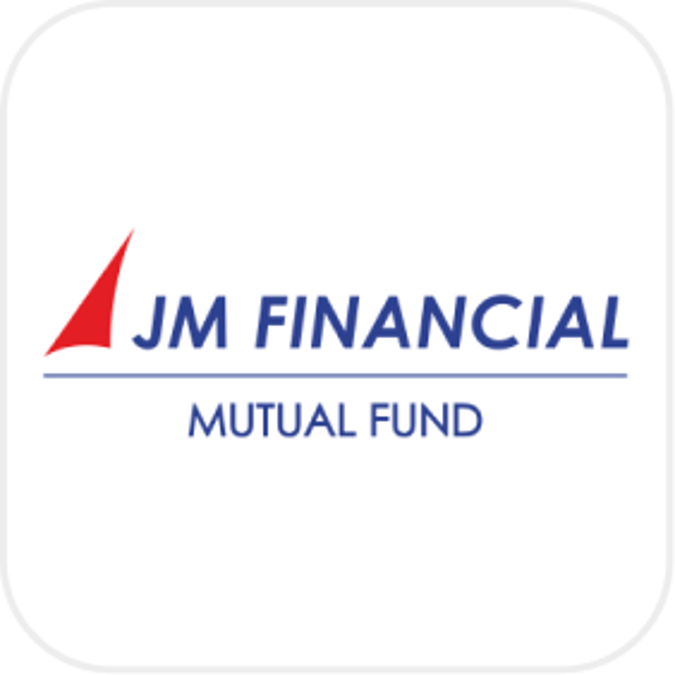
JM Low Duration Fixed Income Mutual Fund has a minimum investment requirement of ₹1000. It has a low risk strategy while maintaining liquidity through a portfolio comprising debt and money market instruments.
Ideal investment period here is 6-12 months so investors with a short term plan can go 4 it! It has in all 29 holdings and has given 6.9% returns since start. Max holdings have A1+/AAA rating (68.26%) followed by AA+/AA, GOI SOV, cash & other receivables, and CDMDFA2.
Benchmark : CRISIL Low Duration Debt A-I Index
NAV : ₹34.85
AUM : ₹246.79 Crores
Age of mutual fund : 11 years
Expense Ratio : 1.09%
Fund Managers : Mr. Gurvinder Singh Wasan (CFA), Ms. Naghma Khoja (CFA), Ruchi Fozdar (fixed income fund manager)
Top holdings : Axis Bank, Kotak Mahindra Bank, Nabard, Larsen & Toubro Limited, Power Finance Corporation
YTM : 7.66%
Risk level : Low to Moderate
Return Period |
Fixed Income Returns |
Return on Investing ₹10,000 |
5 years |
5.35% |
₹12,979 |
3 years |
5.57% |
₹11,770 |
1 year |
7.24% |
₹10,728 |

Quantum Dynamic Bond Fund (QDBF) is also an open-ended debt scheme with a defined credit exposure and dynamic maturity profile. The fund is actively managed keeping in mind interest rate views, and tends to invest in high quality debt and money market instruments.
If interest rates are expected to rise, it will invest in short term securities that mature early and re-invest the proceeds at a higher rate. Conversely if interest rates are expected to fall, the scheme will invest in long term bonds to lock in high interest rates while providing capital growth.
This best Fixed Income Mutual Fund focuses on Safety, Liquidity, and Returns. Moreover, it Minimizes credit risk by investing primarily in Government securities or PSU bonds which are rated as AAA /AA. It is recommended for long-term investors.
It invests 87.18% in government-backed Sovereign bonds, 9.92% in CRISIL AAA rated securities, and 2.90% into Others.
Ideal holding period is more than 3 years because it invests in long term debt instruments which are highly sensitive to interest rate movements. Thus, in a short period of time, returns could be highly volatile and can even be negative. However, over a longer time frame of 2-3 years period, returns tend to normalize along with the interest rate cycles.
NAV : ₹19.68
Age of mutual fund : 9 years
Expense Ratio : 1%
AUM : ₹98.57 crores
Minimum Investment : ₹500
Return since fund start : 7.71%
Benchmark : CRISIL Dynamic Bond Fund A-III Index
Top Holdings : 7.4% NABARD Sr 23A NCD, 6.9% IRFC Ltd NCD, 7.18% GOI 2037, 7.18% GOI 2033, 7.3% GOI 2053
Fund Manager : Pankaj Pathak (managing this fund since 7 years)
Potential Risk Class Matrix : A-III (high interest rate risk and low credit risk)
Risk level : Moderate
YTM : 7.15%
Return Period |
Fixed Income Returns |
Return on Investing ₹10,000 |
5 years |
7.21% |
₹14,171 |
3 years |
5.66% |
₹11,799 |
1 year |
7.20% |
₹10,726 |
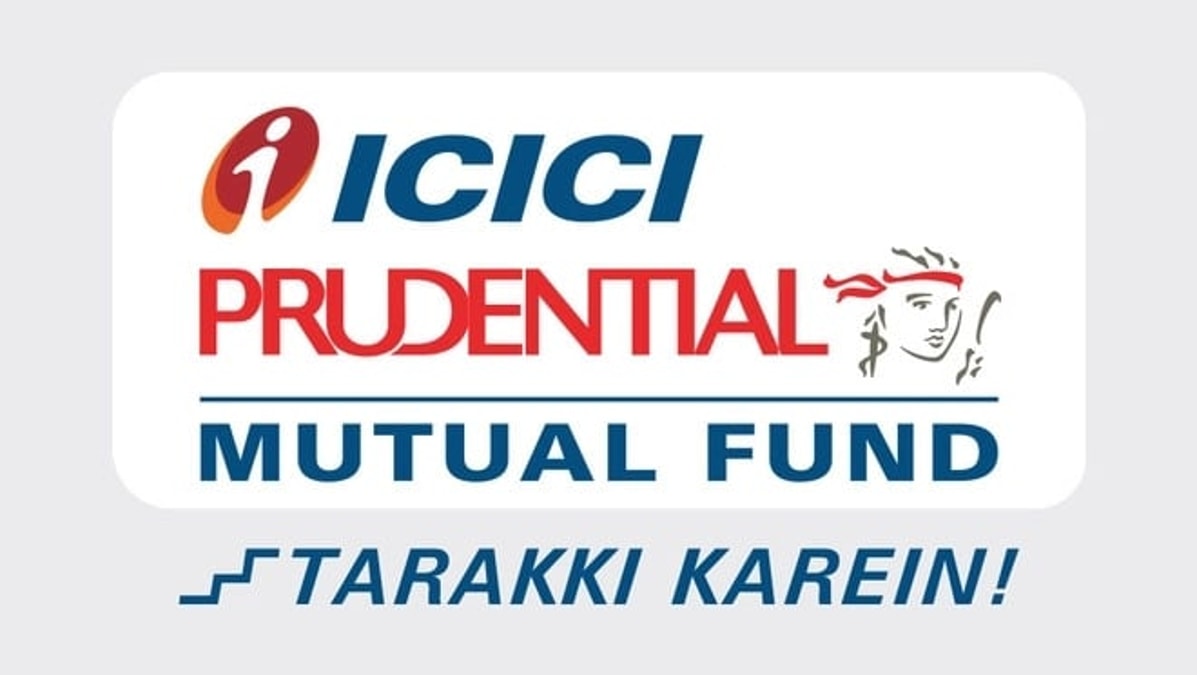
ICICI Prudential Banking & PSU Debt Fund is an open ended debt scheme investing in Debt instruments of banks, Public Sector Undertakings, Public Financial Institutions and Municipal Bonds. It is recommended for short-term savings.
This best fixed income mutual fund invests 67.25% in corporate securities, 26.93% in government securities, and 2.45% into certificates of deposits. Its top credit rating is Crisil AAA (58.2%) followed by SOV (26.92%), Crisil AAA(CE), ICRA AAA, and Crisil A1+.
It falls under moderate credit risk and high interest risk i.e. B-III potential risk class. What’s great here, it has 82 debt holdings which is 50% more than the average of its peer funds. It also excels with low volatility in standard deviation and beta along with Better risk adjusted returns as per Sharpe Ratio, Treynor’s Ratio, and Jension's Alpha.
NAV : ₹29.86
Age of mutual fund : 14.4 Years
AUM : ₹9,056.41 Crores
Expense Ratio : 0.74%
Ideal Investment Period : 9 months and above
Average Return : 5.79%
YTM : 7.77%
Benchmark : Nifty Banking & PSU Debt Index A-II
Top Holdings : 7.18% GOI 2033, 8.34% GOI Floater 2033, Nabard, Small Industries Development, REC, Power Finance, HDFC, DME Development, Mahanagar Telephone, Housing & Urban Development, Bharat Petroleum, Axis Bank
Risk level : Low
Return Period |
Fixed Income Returns |
Return on Investing ₹10,000 |
5 years |
6.98% |
₹14,016 |
3 years |
5.81% |
₹11,849 |
1 year |
7.15% |
₹10,720 |

Bandhan Government Securities Fund Constant Maturity Plan invests in government securities having a constant maturity of 10 years. It has high interest rate risk and low credit risk (A-III). It invests in State Development Loans (SDL), government bonds, Cash Management Bills, and treasury bills.
It is a long-term and moderately risky investment option as it is into securities with a relatively high-interest rate risk which makes it vulnerable to interest rate risk. Thus, increase in interest rates may potentially impact this gilt fund’s potential returns.
Bandhan Government Securities fixed income mutual fund may be vulnerable to reinvestment risk as interest rates prevailing on the interest may potentially differ from the original coupon of the bond. As a result, proceeds may get reinvested at a lower rate. The fund may also be vulnerable to short-selling of securities, securities lending, spread risk, etc.
It is recommended for those who prefer Investments in Government Securities such that the average maturity of the portfolio is around 10 years.
In the past 3 years it has shown high volatility in standard deviation and beta, but has given Better risk adjusted returns which is good.
Age of mutual fund : 22 years
Risk level : Moderate
NAV : ₹40.93
Ideal Investment Period : 3+ years
Benchmark : CRISIL 10 Year Gilt Index
Returns since start : 6.53%
Highest return period : 10 years (8.49%)
Fund manager : Mr. Harshal Joshi (from 7 years)
Expense Ratio : 0.52%
AUM : ₹327.31 Crores
YTM : 7.33%
Return Period |
Fixed Income Returns |
Return on Investing ₹10,000 |
5 years |
7.32% |
₹14,244 |
3 years |
4.31% |
₹11,352 |
1 year |
6.39% |
₹10,644 |
10 years |
8.49% |
₹22,606 |
Note: Expense Ratio of all the funds above are for a regular growth plan and all are open-ended debt mutual funds.
This was all about the Best Fixed Income Mutual Funds in India in 2024. As you saw, it is not essential to stay invested for long-term for better returns here. Also, higher AUM does not guarantee higher returns. It all depends on several multiplying factors.
Disclaimer : Fixed Income Mutual Fund investments are subject to market risks. The NAVs of the schemes may go up or down depending upon the factors and forces affecting the securities market including the fluctuations in the interest rates. The past performance of the mutual funds (shown in this article) is not necessarily indicative of future performance of the schemes. Investors are requested to review the prospectus carefully and obtain expert professional advice with regard to specific legal, tax and financial implications of the investment/participation in any scheme. Thus, there can be no assurance or guarantee that the investment objective of the scheme would be achieved.

- Sort By







 Follow Us
Follow Us



